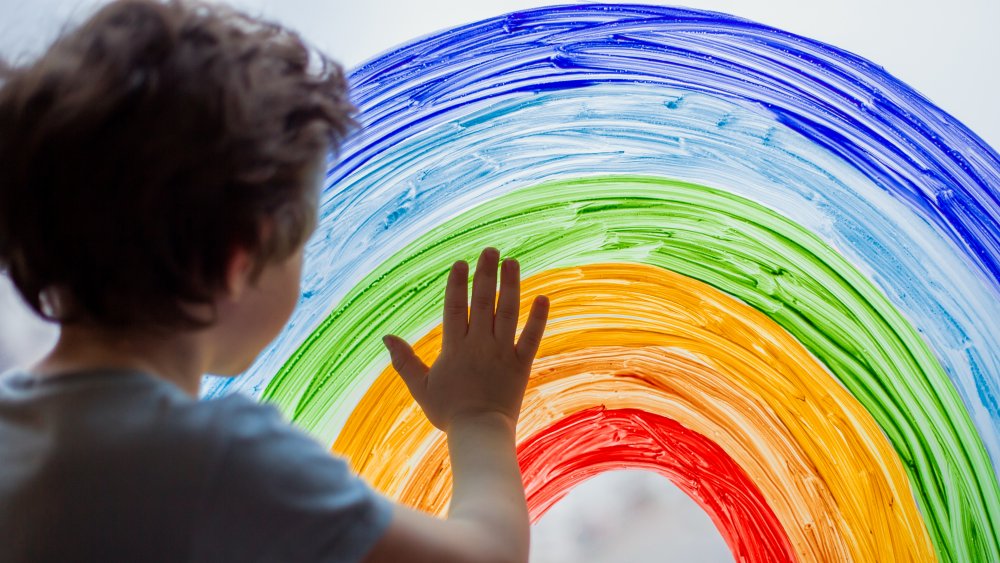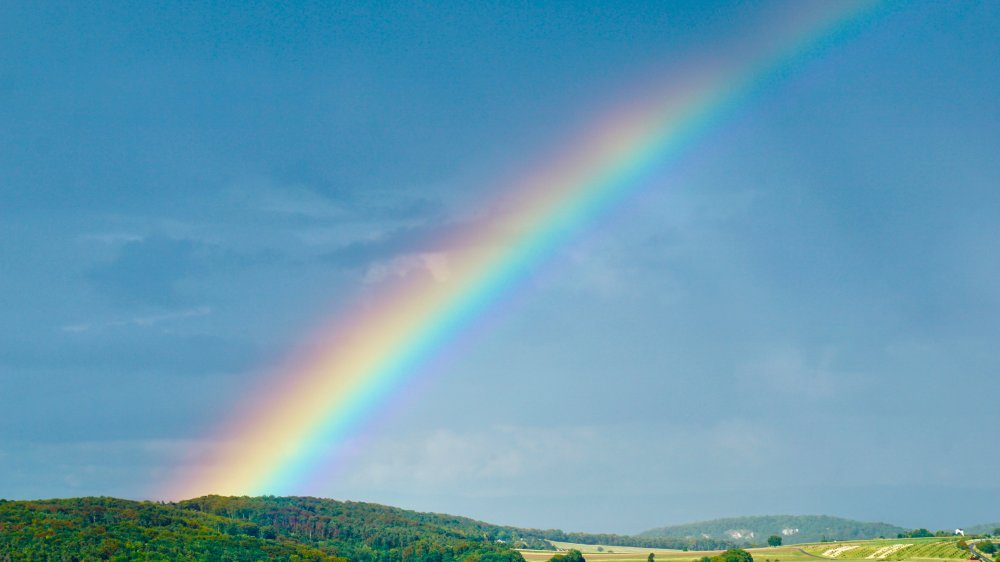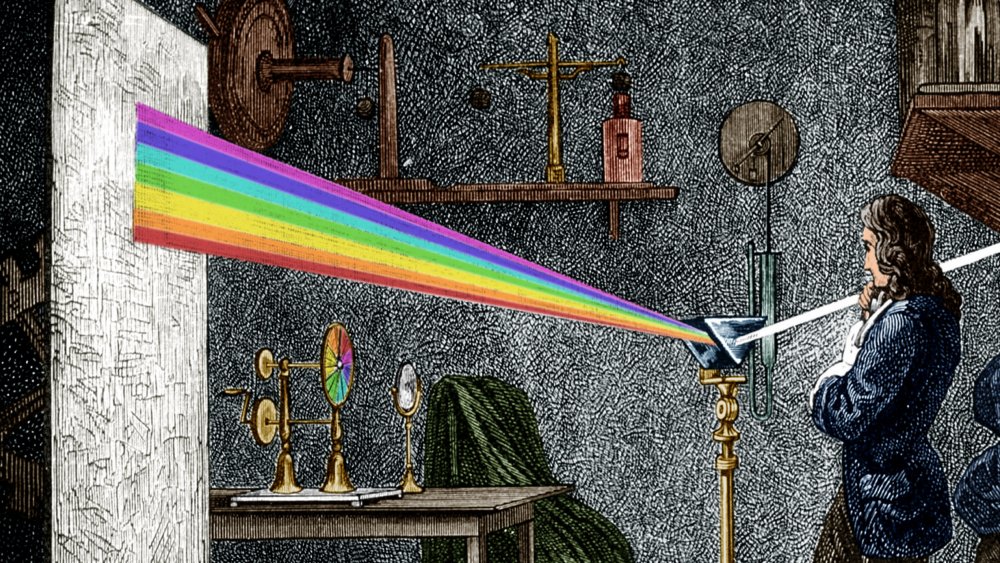How Many Colors Are Really In A Rainbow?
Ask any kid what colors and how many colors are in a rainbow, and you're going to get a cute recitation of the acronym ROYGBIV. Most kids learn about the colors of a rainbow first before they even know what a rainbow is and how it forms.
ROYGBIV, of course, stands for red, orange, yellow, green, blue, indigo, and violet or the seven colors of a rainbow. It's the easiest way to remember colors, and it's also the least annoying way. But ROYGBIV may be incorrect. (Be careful when breaking this news to a little kid).
The truth is, science class lied to us; there are more colors in a rainbow than the seven in the famous acronym. First, a quick refresher. Rainbows are a meteorological phenomenon where droplets of water reflect light. According to How Stuff Works, light is made up of many different colors. So when the water droplets hit some light, the water disperses the colors. When you leave a glass of water, and the light from a window hits it a certain way, you can see a small rainbow created from the water. Alternatively, you can also shine a light through a prism, and it disperses colors the same way.
So we know how rainbows form, but why is it that we see those seven colors and that we've even created an acronym for it? Not to mention the many nursery rhymes about colors of the rainbows from children's shows.
The most scientific explanation
The colors a rainbow throws out are colors on the visible spectrum. Science Blogs explained our eyes only see a small percentage of the colors that make up white light. Humans can only register wavelengths of 400 nanometers to 700 nanometers, meaning our eyes can only discern colors within that frequency. But light, even sunlight, is made up of colors in varying frequencies. For example, humans can't see ultraviolet or infrared light. Within those wavelengths that form visible light, there are also several different colors, varying shades of colors that seem to belong in a 64-crayon box, you know, the fancy kind.
Rainbows, wrote Atmospheric Optics, are actually made up of multiple overlapping bands of colors, not just the seven bands everyone is familiar with. So what we see when we look at a rainbow is a mix of different colors that form what people usually think of as a rainbow. Science Blogs even did the math to try and figure out how many colors a rainbow can disperse. Technically, there are more colors than atoms in a human's body, but it's possible that human eyes may see a little over a million colors. Imagine having to name a million colors. Science Blogs said each cone cell in an eye could recognize 100 shades of a color. Most humans have three cones, so they see a million colors, those who are colorblind can see 10,000 colors, and those who have four cones can even see 100 million colors!
Who do we thank for ROYGBIV?
So that's the scientific answer to how many colors are in a rainbow, but why did we stick with the seven known today? For that, people can thank the discoverer of gravity himself, Isaac Newton.
According to the University of Minnesota, Newton was curious to learn more about color and how color exists. He experimented with prisms and sought to understand how different colors get mixed. But what Newton wanted to do was to explain the idea of colors separate from its artistic merits. Painters have always understood that if you mix colors, like blue and red, you get another, in this case, violet. So artists developed primary colors, which we know today as red, blue, and yellow. These are the base colors that, when mixed, start making secondary colors, and so on. But Newton thought there were more than just three important colors. So he created the idea of a spectrum of colors where colors are placed as if on steps. He saw colors like music; each color builds on the other to make a full octave. At first, he theorized there are five base colors. But he changed his mind.
Newton's idea is that there are seven main colors on his spectrum. The colors? Red, orange, yellow, green, blue, indigo, and violet. Newton, of course, was not the first person to think of colors as a spectrum. Ancient Greeks also thought there were only seven colors. But it's Newton's work that stays with us today.


